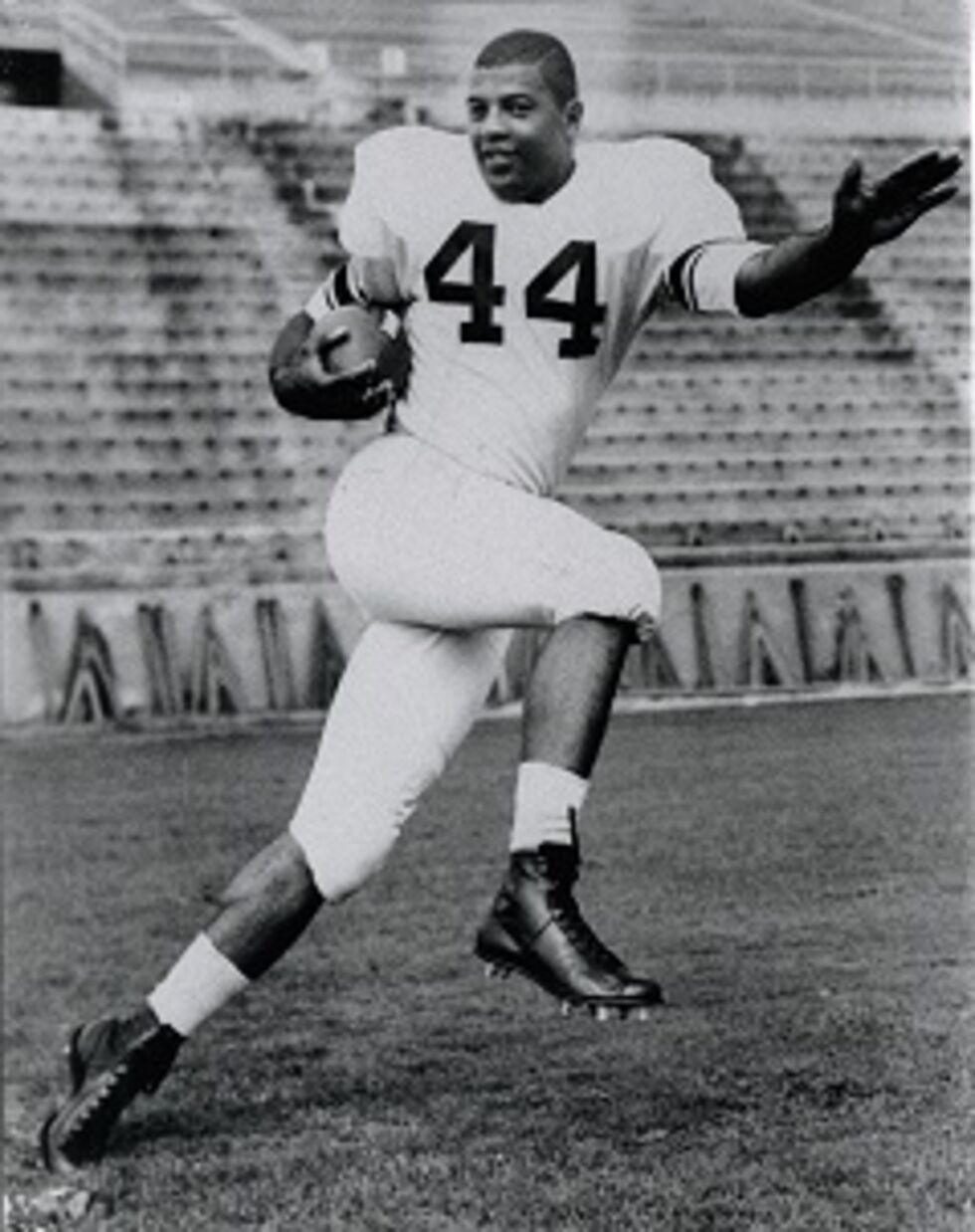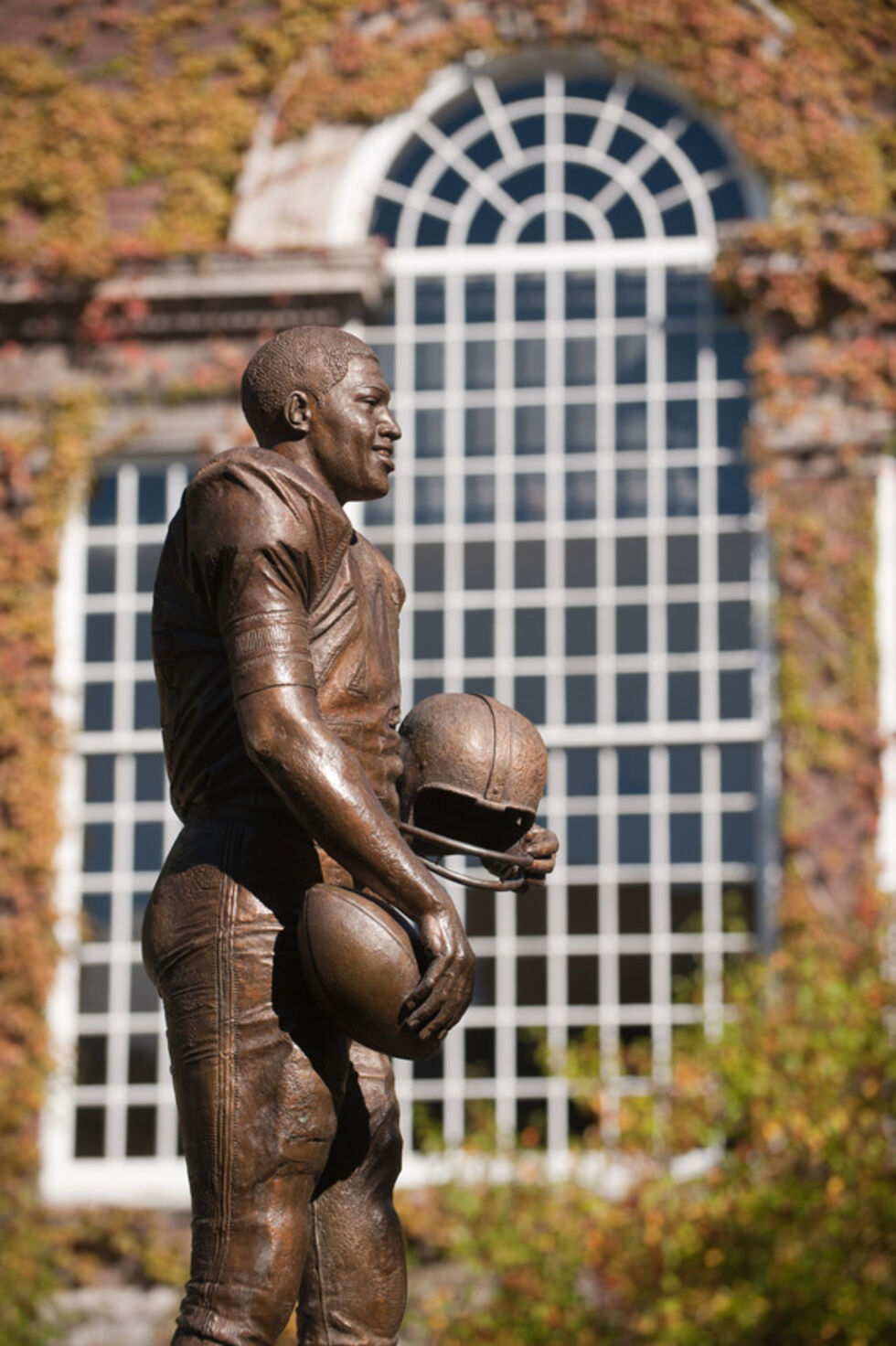Ernie Davis Statue
"Ernie Davis" by Bruno Lucchesi , 2008
Ernie Davis is a bronze statue created by Italian-American artist Bruno Lucchesi which stands on SU’s campus between Hendricks Chapel and the Physics building. The University commissioned Lucchesi to make this bronze life-size sculpture of Davis in October of 2007. The statue honours Ernie Davis, former Syracuse University running back and first African American winner of the Heisman Trophy in 1961. The statue is a lifesize creation of Davis in his number 44 football uniform, standing atop a white granite block. SU sent Lucchesi all of the materials of Ernie’s uniform and football gear – the clothing, the helmet, cleats, pads and the football – to be used for making Ernie’s sculpture. Following an outstanding collegiate career and winning the Heisman Trophy, Ernie Davis was the top football draft selection in the 1962 NFL Draft. Unfortunately, Ernie Davis died of leukemia in May of 1963 at just 23 years old. In the commemorative statue, Davis is shown standing in his Syracuse University football uniform, his helmet held in his left hand, and a football held in his right hand.
The Ernie Davis statue was unveiled during the release of the motion picture about Ernie Davis, "The Express”, on September 13, 2008. The statue was originally created showing Davis in Nike cleats and carrying a modern football and helmet. These discrepancies caused controversy, and the inaccuracies were fixed and the statue replaced in Spring 2009. Lucchesi said of these issues, “When the clay stage was completed, Syracuse University approved it. When the bronze was completed Syracuse University again approved it. And they paid for it upon its completion. They told me that they were thrilled with it. Syracuse University picked up Ernie’s bronze sculpture in June 2008, photographed it, and installed it right before its unveiling on September 13, 2008, on campus. On September 16, I was shocked to learn that the materials given to me for the helmet and the cleats were mistaken. I readily agreed to make the necessary changes in the sculpture… I want to make it clear that I did exactly what I was asked to do and the mistake was not made by me.”
Bruno Lucchesi is an Italian-American sculptor and writer of sculptural techniques. He was born in 1926 in Fibbiano Montanino, a village in Lucca, Italy. His childhood was spent as a shepherd on his family’s farm where he began carving miniature wood figurines while tending to the sheep. His first exposure to sculpture as an artform started when he was ten years old and he went to study at the monastery in Lucca. In 1947 he enrolled in the Institute of Art in Lucca where he was classically trained. Then in 1950 he moved to Florence, Italy and began working for the Paternino Reproduction Company, where he was responsible for creating ceramic figurines to sell to tourists. It was there that he developed a technique known as sfoglia, used for creating realistic folds and texture in clothing. He then took a position as an Assistant Professor at Florence University. In 1958, he moved to New York City where he continues to teach at the National Academy of Design and the New School of Social Research. He received the Guggenheim fellowship in 1962. His work is in permanent collections at, Metropolitan Museum of Art, Brooklyn Museum, Whitney Museum, Hirshhorn Museum, and the Museum of the City of New York, in addition to churches, office buildings, and various locations throughout the US and Italy. Lucchesi is known for his terra cotta and bronze sculpture technique along with his ability to make the human figure depicted in everyday poses. Many have referenced him as the last of the Renaissance sculptors.
SU University Archives; Bruno Lucchesi. Smithsonian American Art Museum; SU Photo and Imaging Archive; Syracuse University Libraries Ernie Davis Collection.


